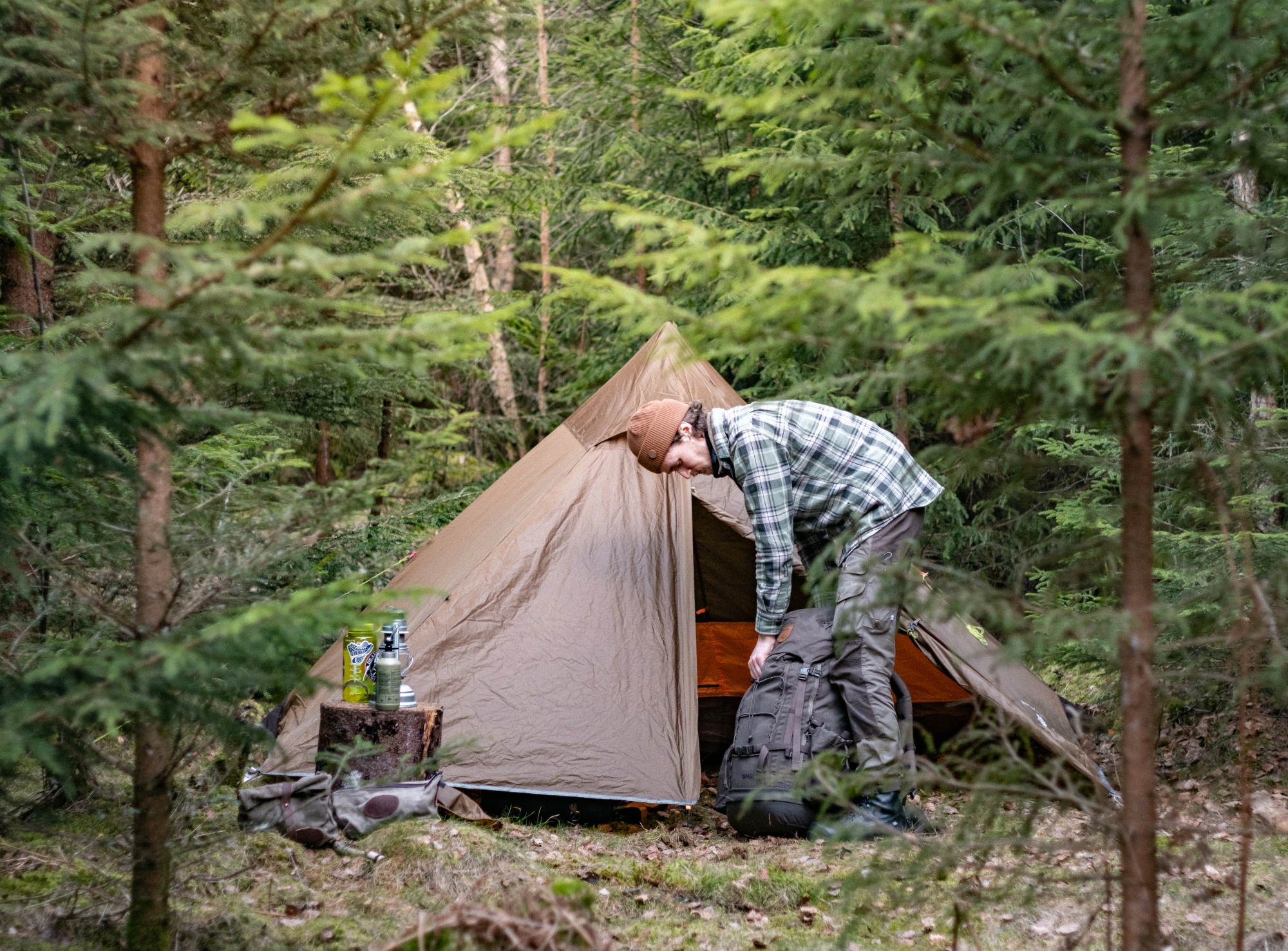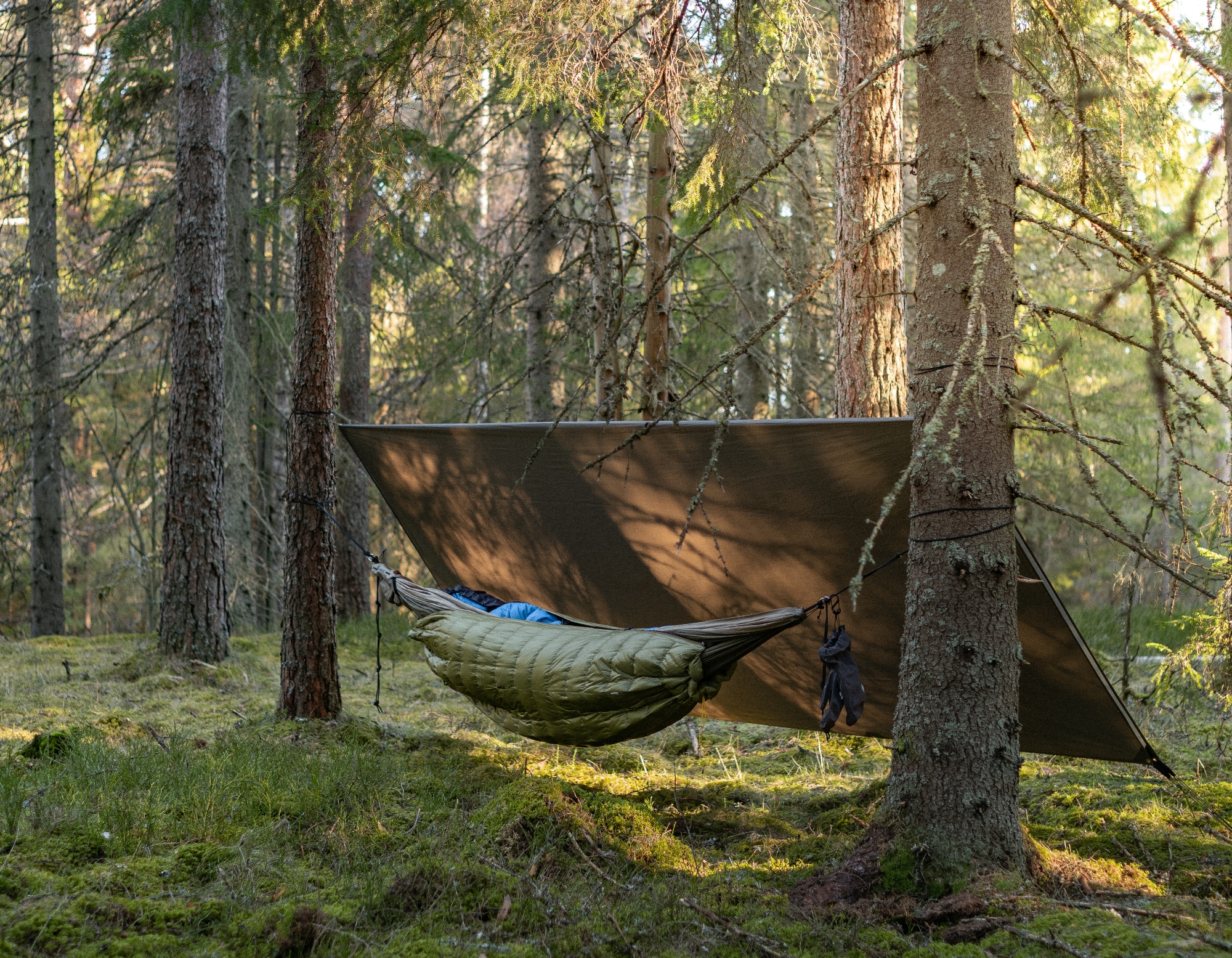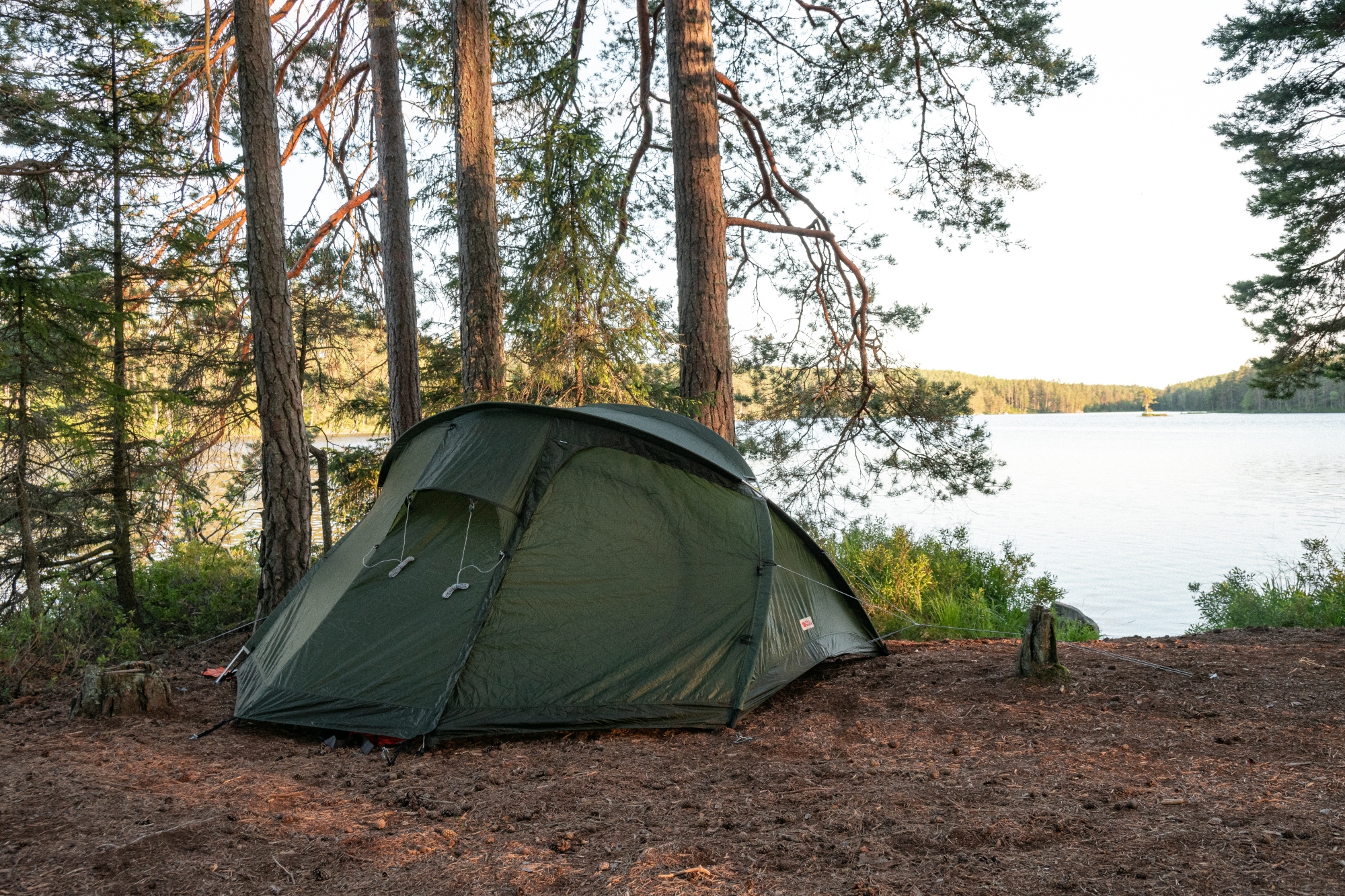Official visitors guide
Jönköping | Huskvarna
Gränna | Visingsö
Official visitors guide
Jönköping | Huskvarna
Gränna | Visingsö
What do you need to know to sleep in nature? Our outdoor ambassador Alexander Stenfeldt talks about everything that can be good to know before your trip.
Sleeping outdoors is a fantastic experience but is also something that can feel scary. How do you go about starting to sleep outside and what is important to have in mind? Keep reading and find out. Sleeping outside is something that can be adapted to suit all people. Find your level and what you feel comfortable with. If you are new to sleeping outside or feel insecure, it is good to start carefully. Set up your tent in the garden or in another place where you feel safe and close to home if you realize that the sleeping pad was not so comfortable or the sleeping bag too cold. For most people, it also takes a couple of times to get used to all the sounds that are in the forest at night. It can then be good to bring a pair of earplugs or headphones to shut out some noise. It can be a lot to think about but do not let it deter you from testing. Also do not forget to have fun, some good food and good company will gild any rainy overnight stay.
Before we go into the actual sleep, we will start by looking at the most common tools that can be used to protect yourself against the weather and wind.

Tent
Tents are by far the most common protection to use. It provides good and comprehensive protection against bad weather. A good tent can withstand rain, wind and snow. Tents are divided into different categories based on when they are to be used and what design they have. A 3-season tent is suitable for you who have planned to be outside in spring, summer and autumn and are usually both cheaper and easier to carry as the materials they are made of do not have to withstand winter weather. If, on the other hand, you have plans to camp in the winter, I recommend that you use a 4-season tent. These have tent arches that can handle the weight of snow and that the ventilation is often located higher up in the tent to enable good ventilation even when the snow is blown up towards the edges.
Depending on which season you are going to camp in, you also need to think about which type of tent is best for you. A tunnel tent usually has a larger apse (awning), which means that you can fit more equipment and can cook in the tent if the weather is really bad. A dome tent usually has less apse but is on the other hand self-supporting, which means that it does not need ground nails to travel. This fits well if you have planned to camp on e.g. rocky ground where it can be difficult to set up a tunnel tent. Another advantage of a dome tent is that it can be erected and then moved, which is good if you realize that the ground slopes or if you want to adjust to get the best possible view.
In addition to these types, there are a whole host of other variants and I recommend that you visit a store that has tents set up to form your own opinion or rent a tent to test the model before buying. Friluftsbutiken Uthuset in Skärstad has an impressive exhibition of tents and at Naturkompaniet in Jönköping you can rent most of the equipment needed.
Hammock
One way that has become increasingly popular is the hammock. The hammock has many advantages over e.g. tent; you do not need access to flat land but all that is required are two trees. The hammock is also very modular and in good weather in the summer, just the hammock is often enough, while if it will rain or blow, it can easily be supplemented with a tarp that is stretched above. This allows the weight of equipment to be adjusted to the trip and you do not have to carry more than necessary. In the summer, a mosquito net is recommended unless the hammock has a built-in one. Many also experience that they sleep better in a hammock and that it is better for the back than sleeping on the ground.

Wind protection
Another popular way to sleep outside is wind protection locations. Wind protections are available in many places in the municipality and at vindskyddskartan.se you will find many of them. In addition to the fact that the wind protections are often located in nice places near water and that there is usually a fireplace available, the big advantage of wind protections is that it requires less equipment and it is enough to only bring a sleeping bag and a sleeping pad.
In addition to these three types, there are many more and it is also possible to sleep completely in the open air without any protection at all, although I recommend at least a mosquito net in the summer.
Equipment
Having the right equipment for the current trip is crucial. A sleeping bag that is too cold can ruin a whole night's sleep, but it is at least as important to have a good sleeping pad, both for comfort but also for warmth. The part of the sleeping bag that is under you does not heat anything because the padding is compressed by your body weight. It is thus the sleeping pad that does all the work of maintaining your body heat and protecting you from the cold of the ground.
Keep warm
In addition to equipment, there are a few things to keep in mind to keep warm during the night. Make sure you are warm when you go to bed; this is most easily done by eating properly and if necessary; take a few laps around the tent or do some cross jumps. A sleeping bag and a sleeping pad can never create heat but can only retain parts of the heat that your body generates. Also bring a change of clothes that are stored dry during the day and that you only use when you sleep. Contrary to many people's beliefs, more clothes do not always mean that you are warmer in your sleeping bag. Too much clothing means that there is less insulating air and can cause you to freeze more, a thin undergarment in wool is best at colder temperatures. If you still freeze, it is better to put a jacket or blanket on top of the sleeping bag.
If you know that you easily wake up from sound and light or that you have difficulty falling asleep when it sounds all around, bring earplugs and an eye mask. The forest may seem quiet and harmonious, but the sound of the wind in the treetops and branches crackling in the dark forest may sound more than you think.

Find a campsite
Choosing a suitable place to set up camp is crucial for a good night's sleep, so choose your camp site carefully. Camping right by the water is attractive but not always recommended as the air at watercourses is colder and wetter, which risks leading to a cold night with a lot of condensation in the tent. The ground near watercourses is also wetter and a sudden downpour can lead to a flooded tent. Therefore, choose a place that is a bit away from the water and at a little height so that water can drain away. A place where it blows a little can also be good as it keeps both mosquitoes and gnats away. Be sure to pick up on the spot before you pitch your tent so you do not have to wake up in the middle of the night with a cone in your back.
Also keep an eye on the sun when choosing a place. Evening sun is preferable not only because it provides a nicer camp life in the evening but also because morning shade keeps the temperature in the tent and provides a more comfortable sleep during the early morning hours.
Also remember to always relate to the obligations you have of the right of public access; only camp where you can, fire only where it is safe, do not wash dishes in streams and do not leave any rubbish behind. You can read more about the right of public access here: Alex explains the right of public access | JKPG.com.
If you want to read more, I recommend Friluftsfrämjandet's guide to sleep outside. There you will find all the information you may need, including ready-made packing lists to use.